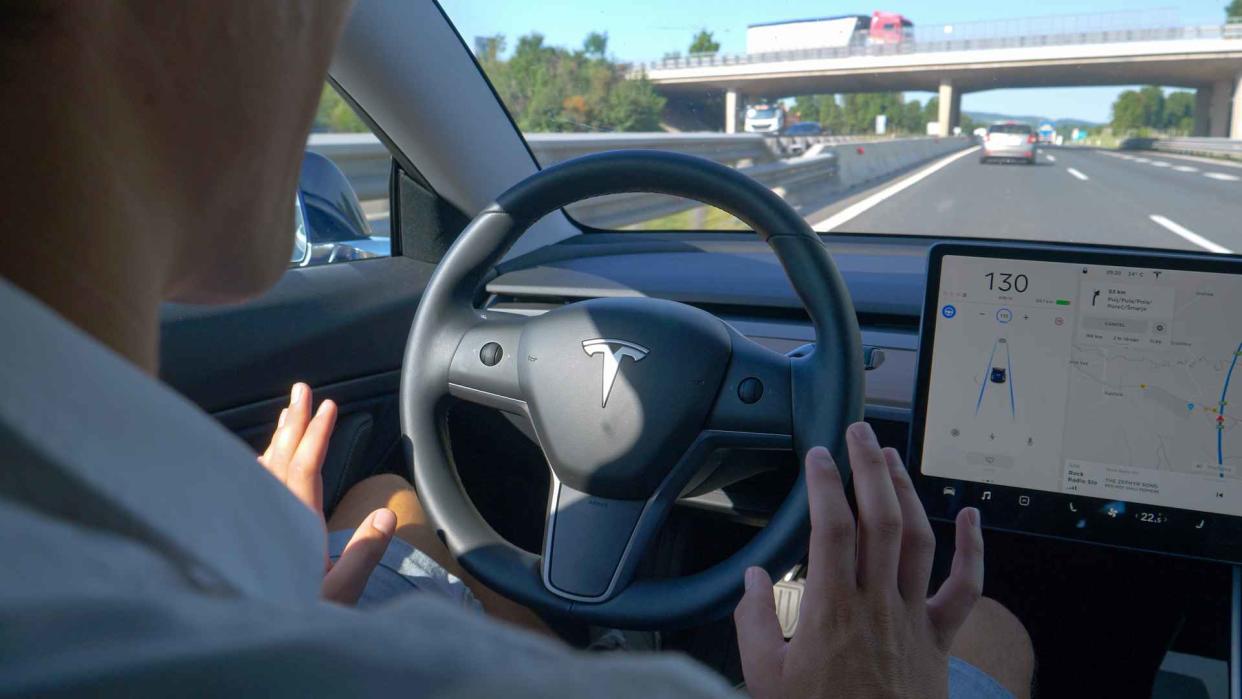Bill Gates Says These Cars Will ‘Save You Money’ — Is He Right?

Chances are Bill Gates has enough change in his piggy bank to not have to worry about paying the bills, but the mega-billionaire still knows the value of saving money. One way he thinks people can do that is by transitioning to self-driving cars – though that will probably be many years in the future.
See: 8 Electric Cars You May Regret Buying
Find: How To Build Your Savings From Scratch
In a March 29 blog on his GatesNotes site, Gates related his recent experience with an autonomous vehicle (AV) while visiting London. The Microsoft co-founder also shared a YouTube video of the ride, which was taken in a car made by Wayve, a British company whose autonomous vehicles are engineered to drive anywhere. Most AVs can only drive on streets that have already been loaded into the navigation system.
Among Gates’ conclusions: Wider adoption of AVs is coming “sooner rather than later,” and “we’ll reach a tipping point within the next decade.” Gates also wrote in his blog that AVs “will eventually become cheaper” than regular vehicles.
“AVs will help create more equity for the elderly and people with disabilities by providing them with more transportation options,” Gates added. “And they’ll even help us avoid a climate disaster, since the majority in development are also electric vehicles.”
The actual cost differences between regular cars and self-driving cars will depend on a variety of factors, including what they are used for. A 2022 report from McKinsey & Co. estimated that the cost per mile of an autonomous taxi could be about 20% higher than that of a private nonautonomous car “in certain contexts, depending on use case, geography, and local conditions such as city archetype.”
At the same time, McKinsey estimated that the cost per mile for a personal (not pooled) AV-taxi trip could cost about half as much as a driver-based ride-hailing trip.
Those savings won’t come anytime soon, however. As Gates noted, widespread autonomous adoption will likely hit the long-haul trucking sector first, followed by delivery vehicles. Most consumers will probably get introduced to AVs through taxis and rental cars. Privately owned vehicles are expected to be the last to be widely adopted, experts say – partly because there will need to be an overhaul of the country’s roads and driving laws. That could be decades in the future.
Meanwhile, the technology is still a work in progress. Look no further than Elon Musk’s push for self-driving cars at Tesla, which has run into so many delays that the company is “nowhere close” to perfecting the technology, the Washington Post reported.
Still, there have been some forward steps. Last year, U.S. regulators took an important first step by clearing the way for autonomous cars to be built without steering wheels or pedals, CNBC reported.
Take Our Poll: Are You Concerned About the Safety of Your Money in Your Bank Accounts?
McKinsey estimates that by 2035, more than one-third (37%) of new passenger cars sold will feature advanced autonomous driving technology that allows cars to handle most driving situations on their own, though it is unclear when laws be passed allowing them to do so on a wide scale.
More From GOBankingRates
This article originally appeared on GOBankingRates.com: Bill Gates Says These Cars Will ‘Save You Money’ — Is He Right?
